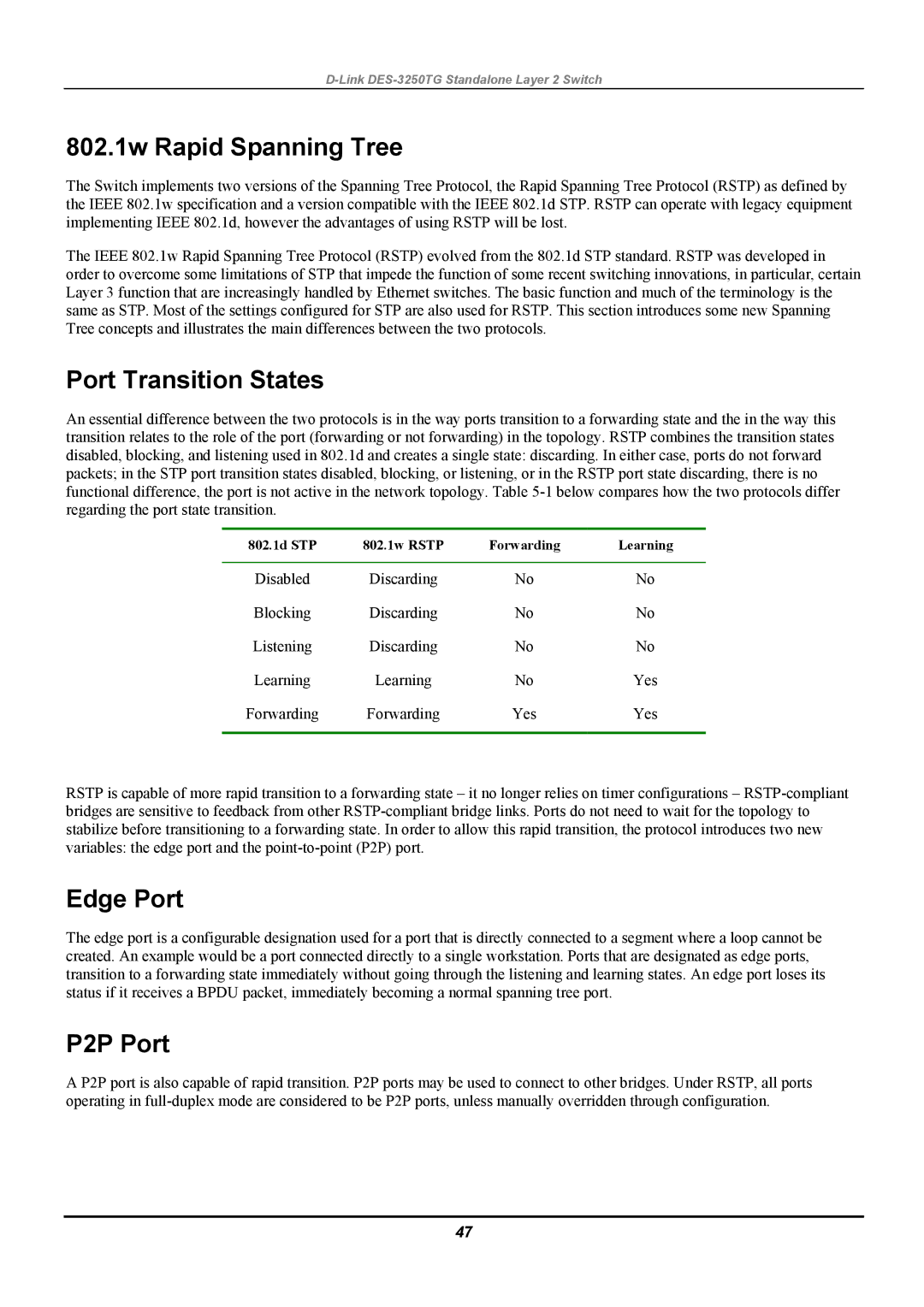
D-Link DES-3250TG Standalone Layer 2 Switch
802.1w Rapid Spanning Tree
The Switch implements two versions of the Spanning Tree Protocol, the Rapid Spanning Tree Protocol (RSTP) as defined by the IEEE 802.1w specification and a version compatible with the IEEE 802.1d STP. RSTP can operate with legacy equipment implementing IEEE 802.1d, however the advantages of using RSTP will be lost.
The IEEE 802.1w Rapid Spanning Tree Protocol (RSTP) evolved from the 802.1d STP standard. RSTP was developed in order to overcome some limitations of STP that impede the function of some recent switching innovations, in particular, certain Layer 3 function that are increasingly handled by Ethernet switches. The basic function and much of the terminology is the same as STP. Most of the settings configured for STP are also used for RSTP. This section introduces some new Spanning Tree concepts and illustrates the main differences between the two protocols.
Port Transition States
An essential difference between the two protocols is in the way ports transition to a forwarding state and the in the way this transition relates to the role of the port (forwarding or not forwarding) in the topology. RSTP combines the transition states disabled, blocking, and listening used in 802.1d and creates a single state: discarding. In either case, ports do not forward packets; in the STP port transition states disabled, blocking, or listening, or in the RSTP port state discarding, there is no functional difference, the port is not active in the network topology. Table
802.1d STP | 802.1w RSTP | Forwarding | Learning |
|
|
|
|
Disabled | Discarding | No | No |
Blocking | Discarding | No | No |
Listening | Discarding | No | No |
Learning | Learning | No | Yes |
Forwarding | Forwarding | Yes | Yes |
|
|
|
|
RSTP is capable of more rapid transition to a forwarding state – it no longer relies on timer configurations –
Edge Port
The edge port is a configurable designation used for a port that is directly connected to a segment where a loop cannot be created. An example would be a port connected directly to a single workstation. Ports that are designated as edge ports, transition to a forwarding state immediately without going through the listening and learning states. An edge port loses its status if it receives a BPDU packet, immediately becoming a normal spanning tree port.
P2P Port
A P2P port is also capable of rapid transition. P2P ports may be used to connect to other bridges. Under RSTP, all ports operating in
47
